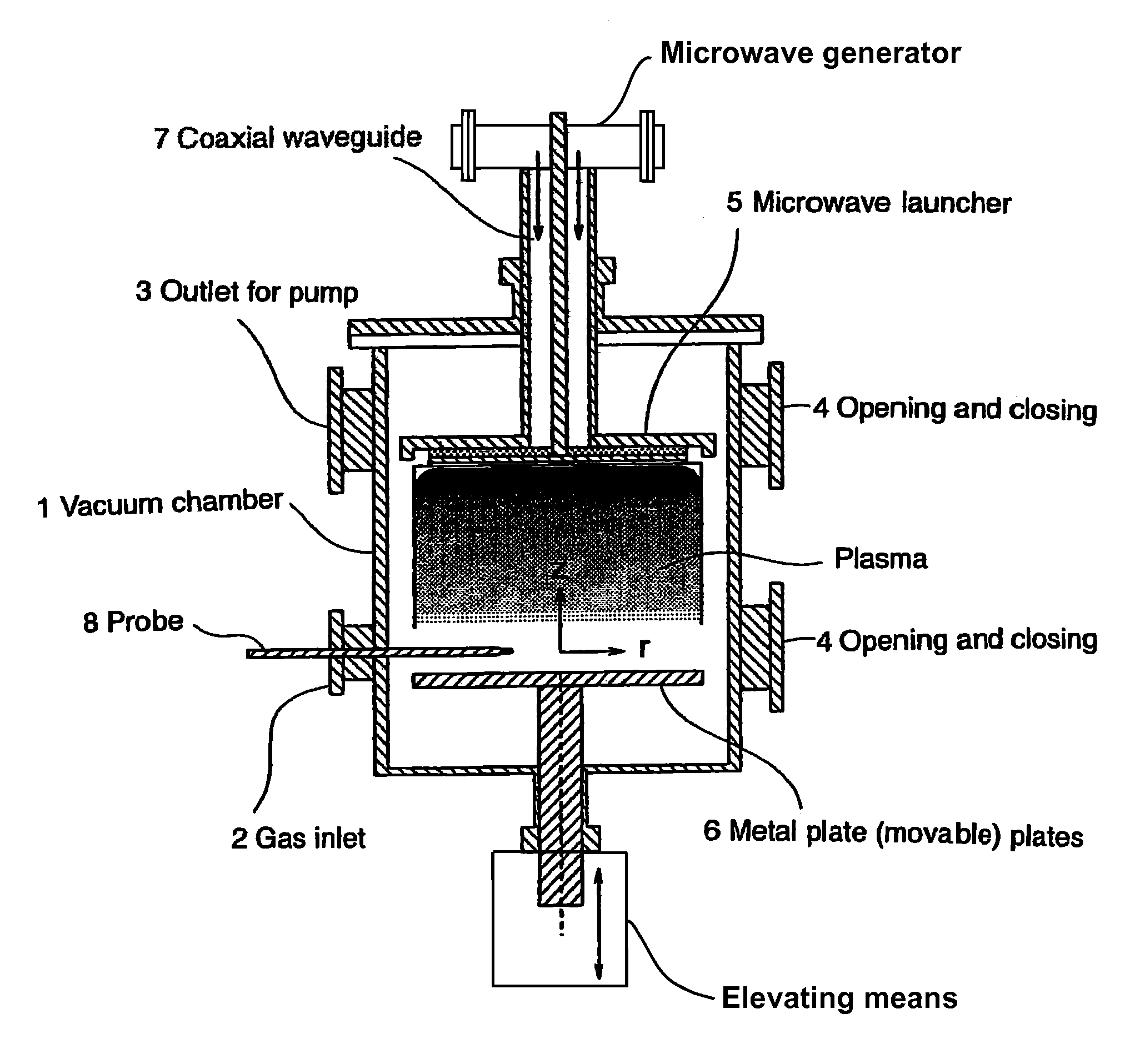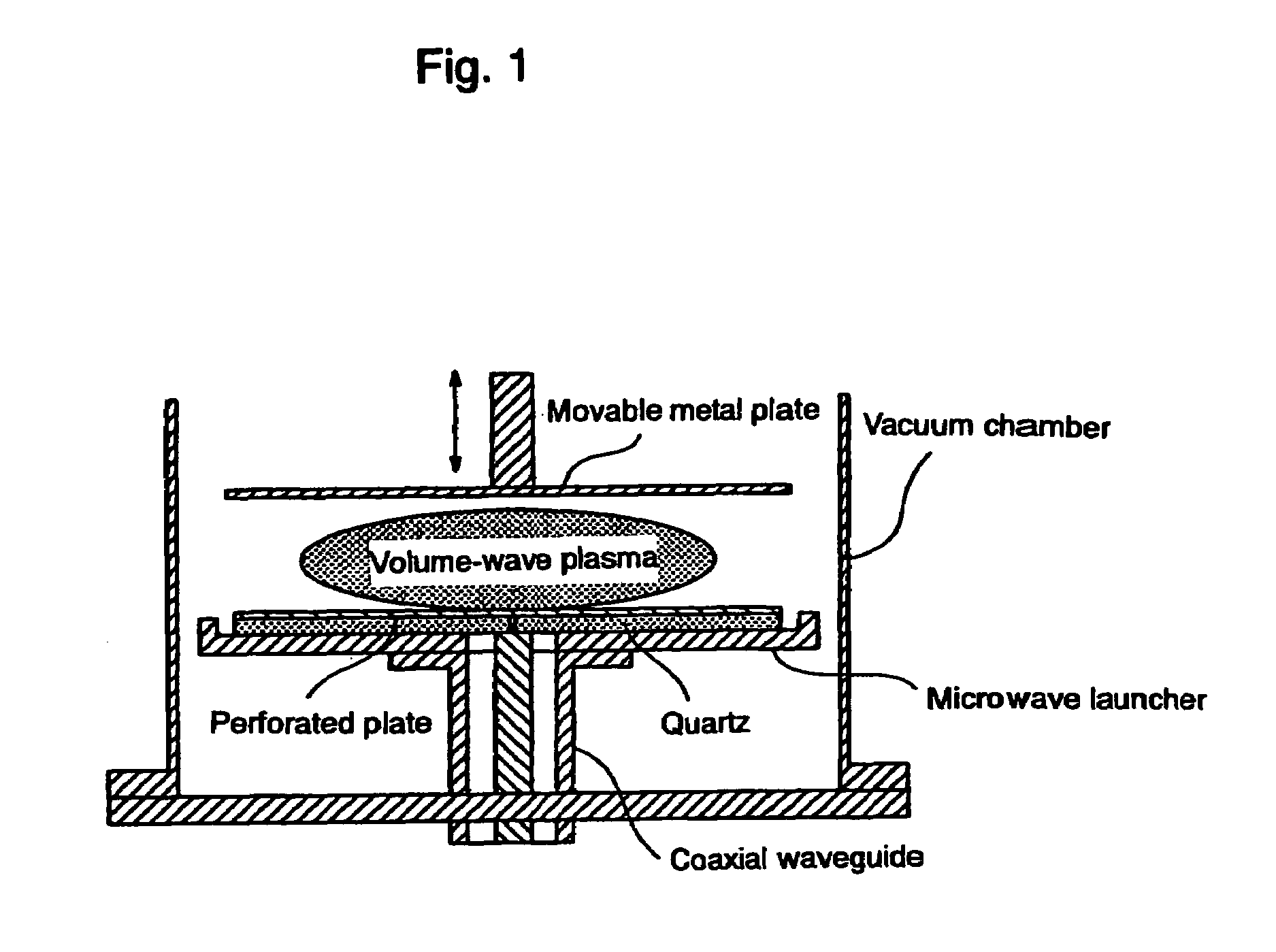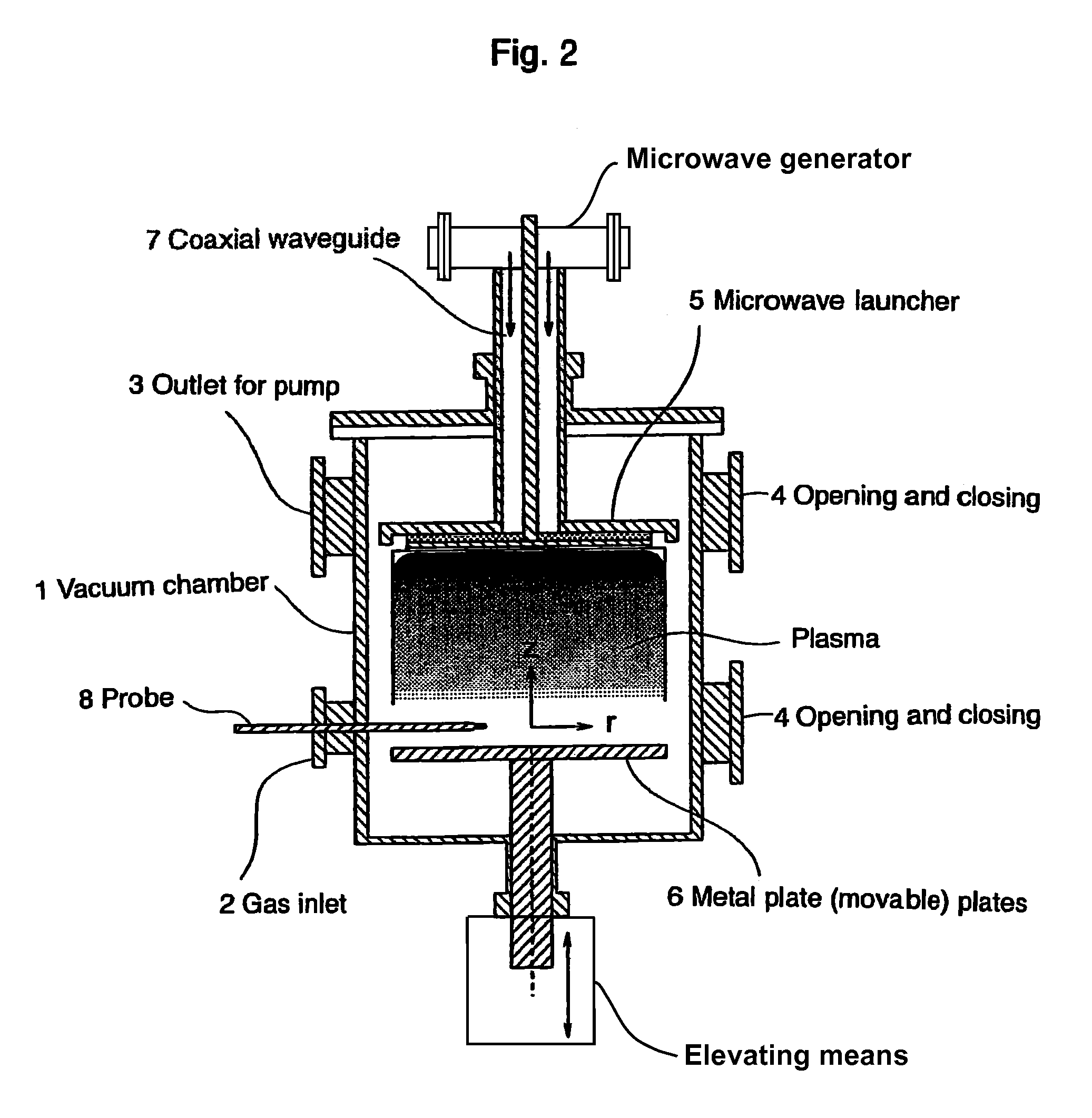Microwave plasma sterilizing method and device
a technology which is applied in the field of sterilization method and device, can solve the problems of inability to use the method for humidity-sensitive materials (such as paper), and the application is limited to metal and glass products, and achieves the effect of effective sterilization and high processing tim
- Summary
- Abstract
- Description
- Claims
- Application Information
AI Technical Summary
Benefits of technology
Problems solved by technology
Method used
Image
Examples
working example 1
[0023]FIG. 2 shows a working example of the microwave plasma sterilizing device of this invention. FIGS. 2 and 3 illustrate and identify stainless steel cylindrical vacuum chamber 1, gas inlet 2, outlet 3 for the pump, upper and lower opening and closing plates 4, microwave launcher 5, movable metal plate 6, coaxial waveguide 7 for introducing microwaves from an external microwave generator, probe 8 for detecting the condition of the vacuum chamber, perforated plate 9, many holes 10 of a specified diameter perforated through the perforated plate, quartz plate 11, and vacuum seal 12.
[0024]The stainless steel cylindrical vacuum chamber 1 of this working example is 500 mm high and has an inside diameter of 250 mm. An aluminum microwave launcher 5 is arranged in the vacuum chamber 1. A movable metal plate 6, 220 mm in diameter, is arranged opposite to the microwave launcher 5. The movable metal plate 6 is connected to an elevating means to allow vertical positional adjustment.
[0025]FIG....
working example 2
[0028]FIG. 4 shows another working example of the microwave plasma sterilizing device of this invention. The figure depicts the structure of the vacuum chamber of a large-area plasma device. The reference numerals are the same as used in FIGS. 2 and 3. The stainless steel cylindrical vacuum chamber 1 is 350 mm high and has an inside diameter of 600 mm. The microwave launcher 5 is suspended from above in the vacuum chamber 1. The quartz plate 11 is 10 mm thick and has a diameter of 500 mm. The diameter of the holes 10 through perforated plate 9 are 4 mm, 6 mm or 10 mm.
[0029]A 2.45 GHz microwave oscillator (not shown) with 1.5 kW output transmits microwaves to the microwave launcher 5 after coaxial conversion at the coaxial waveguide 7. In this working example, we used Ar gas at 74 m Torr gas pressure to generate plasma. As we increased the incident power from 0.2 kW to 1.5 kW, plasma was generated at the center of the launcher 5 and gradually expanded around the launcher's periphery....
PUM
| Property | Measurement | Unit |
|---|---|---|
| temperatures | aaaaa | aaaaa |
| diameter | aaaaa | aaaaa |
| diameter | aaaaa | aaaaa |
Abstract
Description
Claims
Application Information
 Login to View More
Login to View More - R&D
- Intellectual Property
- Life Sciences
- Materials
- Tech Scout
- Unparalleled Data Quality
- Higher Quality Content
- 60% Fewer Hallucinations
Browse by: Latest US Patents, China's latest patents, Technical Efficacy Thesaurus, Application Domain, Technology Topic, Popular Technical Reports.
© 2025 PatSnap. All rights reserved.Legal|Privacy policy|Modern Slavery Act Transparency Statement|Sitemap|About US| Contact US: help@patsnap.com



